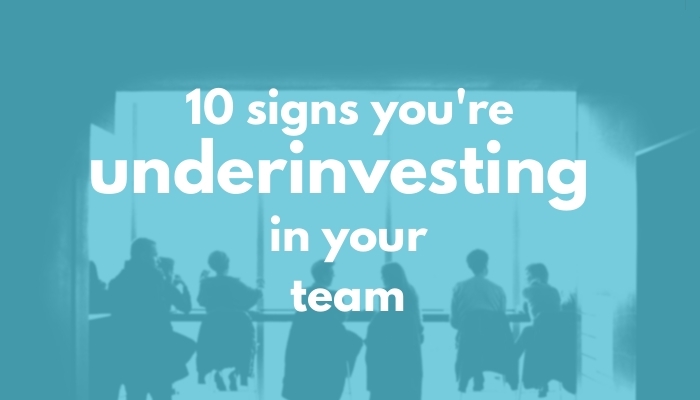I was speaking with the CEO of a fast-growing technology firm a couple of weeks ago. We were discussing how to build on their success by taking internal engagement, communication and alignment to a new level.
“I generally recommend starting with the senior leaders,” I explained. “Because leaders define culture, and people need to see their leaders walking the walk before they will follow”.
“Ah,” he replied. “But my leadership team are superstars. They are the best-of-the-best, they are going at 100mph and driving my business forward. Do they really need much input?”
It’s a great question. When we see poor leadership in our organisation, it’s easy to see the benefits of improved self-awareness, of a leadership toolkit or of a journey of growth. But… when our leaders are superstars?
In other words - do the healthy really need a doctor?!
Here are 5 questions to ask that can unlock growth when your leadership team already are superstars.
1. Have I celebrated them?
It’s great news that you have a team of superstars to rely on. You are in a privileged situation that is all-too rare. A superstar team can achieve truly great things.
And yet, precisely because these leaders are so low-maintenance and yet high-performing, it’s easy to underinvest in them in order to focus on the more pressing and painful challenges facing the organisation.
Action Step: Take a few minutes this week to thank them - not only for the results they are bringing in, but also for their professionalism, their character and your relationship. It’s such a simple thing but so easily overlooked.
2. Are we are team of high-performers, or actually a high-performing team?
At one point during my time at Cisco, I joined an incredible team. Everyone was a high-performer, with a strong track record internally and with key customers. And yet I could never shake the feeling that although we were a team of high-performers, we weren’t truly a high-performing team.
More...
It’s the ‘supergroup’ phenomenon: signing up a bunch of ‘rock stars’ and putting them in the same rock band isn’t necessarily a recipe for musical innovation or band harmony!
The best teams are far more than the sum of their parts. However, superstars don’t necessarily feel the pressure to truly engage in the give-and-take of teamwork - they will deliver good results anyway and they are used to being the centre of attention.
Action step: Ask yourself how your team needs to change to access the benefits of better collaboration and synergy between its members. Specifically, what needs to change in (i) relationships (ii) communication (iii) alignment (iv) execution and (v) capacity development?
3. What is the 360 degree view?
Many leaders have some kind of dark side. I can think of
- Duncan, the fantastic and charismatic business developper who leaves a stream of chaos behind him.
- Laurence, the incredibly conscientious ‘execution machine’ who leaves her colleagues feeling bullied and micromanaged.
- Or Maxime, the technical genius who tunes out when subjects don’t interest him.
All these people can be seen as ‘high performers’ when viewed by their management. They get results. However, mainly due to a lack of self-awareness, the actual lived experience of the team can fail to be as extraordinary as the results might indicate.
So the leader might actually be building up a ‘debt’ of mistrusting, fearful, apathetic, cynical or disengaged employees in their wake. Or they may be focusing on the ‘high performers’ in their own teams, and failing to develop the remaining 80% of the organisation.
Action step: Get armed with real data about how the teams that your direct reports run see their own strengths and limitations as a team. It’s not so much a 360 degree assessment of the leader you’re after, as a 360 degree view on the kind of team they’ve been able to create.
4. Where is the bottleneck?
100mph leaders may need to understand the full extent to which they are actually a bottleneck to growth. Their love of winning, their sheer competence and their capacity to execute means they can take on - and deliver - a lot, all by themselves.
As the African proverb puts it, ‘if you want to go fast, go alone, but if you want to go far, go together’.
In other words, learning how to multiply yourself into your team is a very different skill set than your technical expertise.
100mph leaders need to understand the full extent to which they are actually a BOTTLENECK to growth! #leadership
This is a personal question for me. It turns out I’m a bit of a ‘100 mph leader’. I was top of my cohort at Oxford University, youngest ever to make Partner in my consulting firm, headhunted into a senior role in a Fortune 100 firm. I knew how to get results and go fast, but it took me quite some time and a few embarrassing incidents to realise that sheer competence can only get you to a certain level. I was effective, probably too arrogant… and unleveraged! For me, the next level of leadership was learning how to multiply my skills into my team, so that I wouldn’t be the bottleneck.
Action step: Ask what it is that your superstar leaders can do that their teams cannot. And then identify the specific areas where they are being a bottleneck to the success of their organisation.
5. How are your N-2 leaders?
Let’s call your direct reports your N-1 leaders; they are a level down from you in the organigram. So the N-2 leaders are the direct reports of your reports.
Your N-2 leaders are key to the organisation because there are so many more of them than your N-1 team. If everyone has 6 reports, you have 6 direct reports but 36 leaders at the N-2 level (potentially managing 216 people).
Ask yourself how you would rate the leadership and delivery skills of the N-2 leaders. What kinds of teams are they building? Do they have the IQ (hard skills) and EQ (soft skills) and PQ (self awareness) needed to get the most out of their teams?
Action step: If your N-2 leaders are a mixed bag, your superstar N-1 leaders are the key. But for your superstar leaders to get your N-2 leaders to the next level, they will need a common leadership language and toolkit to pass on.
Conclusion: What is their next level?
Even superstar, 100mph leaders have a next-level of leadership and influence available to them. In this article we’ve examined four possibilities: - collaborating amongst themselves - dealing with the ‘dark side’ of their leadership strengths - getting themselves out of being the bottleneck - building the next level of leaders in their organisation
But it might be something else entirely. However, that next-level exists and whilst other voices in the organisation may be more obvious candidates for ‘leadership development’, turning ‘superstars’ into ’megastars’ (without a mega-ego) might actually have a bigger impact on your growth than you ever thought.
Question: what growth opportunities do you see for the highest-performing leaders you know? Please share your thoughts below.



